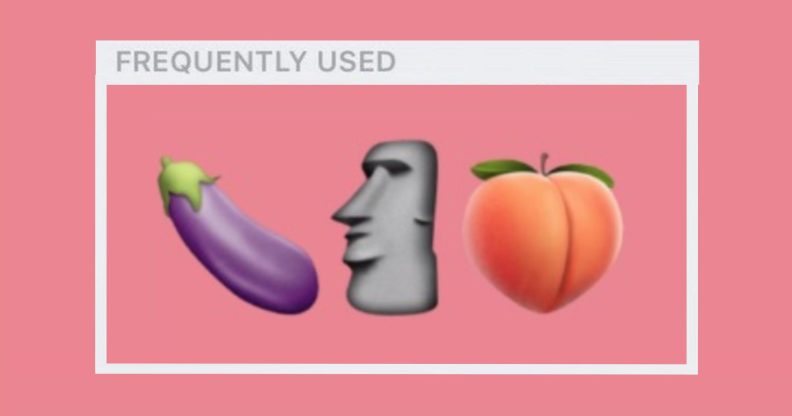Guessing if someone is top or bottom based on their most-used emojis is the latest bizarre Twitter craze

From the aubergine to peaches to Moai statues, what people’s most-used emojis are taels more than just their texting habits. (Emoji)
What someone’s five most recent emojis are is the secret to knowing the answer to the question as old as time itself: “Are they a top, bottom or switch?”
At least, according to LGBT+ Twitter.
From lemons to trademark logos, laughter crying face to maoi statues. To Twitter, these are an insight into your soul.
The latest Twitter trend sees people drop their five most recent emojis and asking the Twitterverse what position the emojis imply they are.
For some users, however, the results were inconclusive:
Clown, nose-blowing, double exclamation marks, nose and broken heart emojis are as top as they are bottom, to Twitter.
As do a purple and blue heart, blushing face, sparkles and red wine. Twitter science, everyone.
A lot of people assumed that the users are bottoms:
Which is a trend a number of users caught wind of, as one said: “I’m voting bottom for anyone that posts the top five emojis thingie.”
“Anyone that does that ‘top five emoji’ poll is automatically a bottom to me,” said another.
But others felt validation when people voted for positions they do not necessarily align with:
A few folks got told they have intense top energy, or that they are a top “with bottom energy”:
There’s more to queer life than top, bottom and switch.
But one user questioned that how people signified each emoji may actually be based on harmful stereotypes in the LGBT+ community:
As Betty, a non-binary blogger who reviews sex toys, argued, how people perceive one another sexually is often based on the extent they tick particular stereotypes. In other words, if you look the part or not.
This is a sentiment touched upon in an interview with queer playwright Willy Hudson earlier this year.
Hudson has written an autobiographical show called Bottom, exploring the labels often plastered over apps such as Grindr.
He told PinkNews: “We do need to reshape the way we think about sex.
“Top or bottom is something we all talk about and we all joke about but we don’t really challenge it and interrogate it, and think: Is this actually helpful for me?
“Sex is about connection, it’s about vulnerability, it’s about intimacy,” he explained.
“There’s a whole world which is way more than just top, bottom or vers.”
Moreover, Hudson argued that stereotypes around being a bottom are seen “as a negative thing because of internalised homophobia within the community”.
He added: “A bottom is seen as feminine, as submissive, which is seen as negative. It’s just internalised homophobia. It’s not seen as a strength.”
How did this story make you feel?

